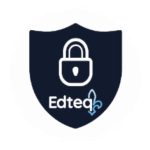From the Editor's Desk
There are many ways for young people to demonstrate their learning. Sometimes all it takes is for them to step out of the box and let their creativity run wild for them to surprise us in a pleasant way.
Fortunately, the opportunities for students to demonstrate their skills have never been greater (with digital technology adding to the traditional arsenal). Beyond the paper- and-pencil exam, they can express what they have retained and understood about
a notion through different products: oral report, video, schematic illustration, written production, etc.
All this evidence of learning that they leave during the school year makes it possible to draw an accurate picture of their abilities and to determine the level of achievement of the planned learning targets, based on concrete elements.
"Evidence of learning is a demonstration of what the student knows, can do, and/or can express."
To this end, schools are increasingly interested in the concept of triangulation of learning evidence. It involves the teacher collecting evidence of student learning from three different sources: oral expression (including conversations), observation of attitudes and behaviours, and various projects (written or other). The teacher can then gather this evidence to determine the final grade for the students.
This issue suggests ways to begin, simplify, or enrich the process of collecting student evidence of learning. The issue also presents ways to effectively integrate this approach into teaching best practices as well as in the collection, organization, and evaluation of evidence of learning. Tips are provided on how to give feedback. Concrete examples are presented, including those from the Conseil scolaire acadien provincial virtual school in Nova Scotia, and useful tools are suggested (on this subject, do not miss out on the central pages!).
The idea is not to change everything overnight, but to take a step forward and let students leave their marks.
Audrey Miller, Editor-in-Chief
@millaudrey
Martine Rioux, Managing Editor
@riomarti
December 2022 – Volume 2, issue 2
Writers
Erin Beard, Alexandra Coutlée, Laurie Couture, Anne Davies, Stéphane Hunter, Caroline Labbé, Karine Lachance, Mathieu Mercier, Lucie Michaud, Audrey Miller, Marie-Andrée Ouimet, Dominique Pissard, Pierre Poulin, Martine Rioux, Éric Therrien, Patrice Tourangeau
Editor-in-Chief
Audrey Miller
Managing Editor
Martine Rioux
Editorial Assistant
Karla Mora
Development Director
Stéphanie Dionne
Linguistic Revision
Tracey-Lee Batsford, Alexandra Coutlée
Translation
Tracey-Lee Batsford, Josée Tardif, Audrey Miller, Alexandra Coutlée
Additional Proofreading
Nicole Arsenault-Bernard, Alexandra Coutlée, Laurie Couture, Karla Mora, Karine Turcotte
Graphic Design
Marie-Michèle Bouchard-Roussin
Kate-Lyn Lapointe
(EMBLÈME Communication)
Printing
Numerix
Advertisment
ad.engagedlearningmagazine.com
Legal Deposit 4th trimester 2022
Bibliothèque et Archives nationales du Québec
Library and Archives Canada
ISSN 2564-2510 (Print)
ISSN 2564-2529 (Online)
Your thoughts on this issue
Subscription
The professional magazine for teaching in the digital age!
EngagED Learning magazine is made for teachers, pedagogical consultants and school leaders. There are 3 new issues per year, available in both print and digital format. You can subscribe for yourself or take advantage of our school license!









